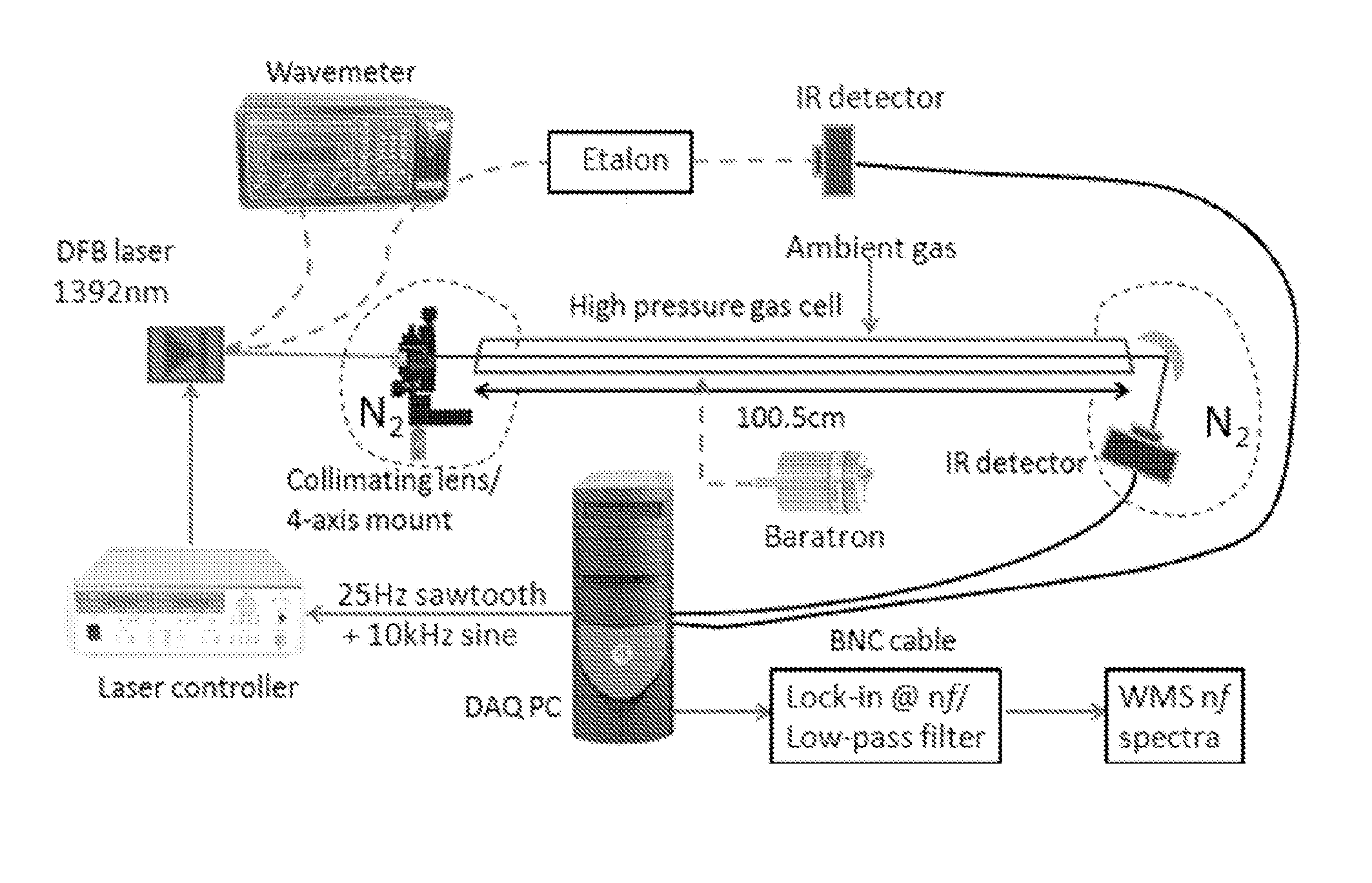Method for Calibration-Free Scanned-Wavelength Modulation Spectroscopy for Gas Sensing
a scanned wavelength modulation and gas sensing technology, applied in the direction of optical radiation measurement, instruments, spectrometry/spectrophotometry/monochromators, etc., can solve the problems of complicated wms technique, difficult to achieve, and more challenging
- Summary
- Abstract
- Description
- Claims
- Application Information
AI Technical Summary
Benefits of technology
Problems solved by technology
Method used
Image
Examples
Embodiment Construction
[0035]The current invention provides a calibration-free wavelength-modulation spectroscopy (WMS) method for absorption sensing with injection-current-tuned diode lasers (TDL5). More specifically, a method of calibration-free scanned-wavelength modulation spectroscopy (WMS) absorption sensing is provided that includes obtaining absorption lineshape measurements of a gas sample on a sensor using 1f-normalized WMS-2f, where an injection current to an injection current-tunable diode laser (TDL) is modulated at a frequency f, where a wavelength modulation of the TDL and an intensity modulation of the TDL are simultaneously generated, extracting using a numerical lock-in program on an appropriately programmed computer and a low-pass filter with an appropriate bandwidth WMS-nf (n=1, 2, . . . ) signals, where the WMS-nf signals are harmonics of the f, determining a physical property of the gas sample according to ratios of the WMS-nf signals, and determining non-absorption losses using at l...
PUM
 Login to View More
Login to View More Abstract
Description
Claims
Application Information
 Login to View More
Login to View More - R&D
- Intellectual Property
- Life Sciences
- Materials
- Tech Scout
- Unparalleled Data Quality
- Higher Quality Content
- 60% Fewer Hallucinations
Browse by: Latest US Patents, China's latest patents, Technical Efficacy Thesaurus, Application Domain, Technology Topic, Popular Technical Reports.
© 2025 PatSnap. All rights reserved.Legal|Privacy policy|Modern Slavery Act Transparency Statement|Sitemap|About US| Contact US: help@patsnap.com



